#horizontal organizing
Explore tagged Tumblr posts
Text
Really important concept to understand and internalize! I would also recommend “If We Burn” by Vincent Bevins

89 notes
·
View notes
Text

✨MASTERLIST✨
(fanart, longfics, oneshots)

Welcome to my blog!!! Here is my masterlist of ALL of my little sketches, artwork, writing, and general brainrot related to Hogwarts Legacy💘
🌿 - Madeleine / Maddy / myokk
🌱 - AO3
🌿 - likes and follows come from my main blog, @oerflink, because this is a sideblog (🥲)
🌱 - Eloise Babbit, my MC and basically the whole reason for this blog🫶 I don’t necessarily view her as the game’s MC, as my fic is quite canon-divergent and she is sweeter than the evil gremlin I played in-game😆💓 [link to her character sheet]
🌿 - my art tag🫶🫶🫶 here you can see basically every drawing I've done since joining the fandom!
💫 - COMMISSIONS ARE OPEN♥️ you can find more information here, and here you can see all of the commissions I’ve already done♥️
🌱 - tag for all of the art the lovely people here have gifted me🥹🥹🥹 I feel SO honored whenever anyone takes time out of their day to think of me and draw my little gremlin♥️♥️
🌿 - I am taking oneshot requests! The link gives a bit of my guidelines, if you’re interested send me an ask🫶

Writing:
Before It Felt Like A Sin (AO3 / tumblr - ongoing)
Sebastian Sallow x F!MC, canon divergent, longfic, wip, dual pov Eloise/Sebastian
Summary: Eloise never wanted to be different.
And yet, her differences are what have defined her life up until this point: growing up as a squib in one of the most prominent wizarding families, being exiled to muggle society, and then attending Hogwarts at the age of sixteen.
She finds herself thrust into the life she should have been prepared for from birth but was denied. As she navigates this new life and her new precarious position in her family, she must come to terms with the fact that maybe what she dreamed of her whole life isn't turning out how she ever expected it would.
Tags: slow burn, angst, magical theory, mythology references, pureblood culture, occlumency, legilimency, hurt/comfort, family dynamics, eventual romance, eventual smut, sacrificial magic, blood magic, dark magic rituals, implied/referenced child abuse
[coming soon] - an excerpt from the Ominis longfic I’m working on💘

Oneshots:
clumsy (AO3 / tumblr)
pairing: Sebastian Sallow x f!MC
word count: 9,1k
rating: E
summary: sebastian is clumsy.
or: two stubborn brats make things more difficult than they have to be.
cw: fluff, mutual pining, idiots in love, two really stubborn idiots in love to be exact, sir cadogan guest appearance, anne and imelda are the gremlin best friends every girl needs, smut (18+ ONLY), oral (f. recieving), no y/n
note-taking (AO3 / tumblr)
pairing: Sebastian Sallow x f!MC
word count: 3,6k
rating: M (language and sexual themes)
summary: mc loves flustering sebastian with her notes during class😇
cw: NONE this is just fluff, mutual pining, idiots in love, it takes a while for them to admit their feelings, I rated it M for some language/sexual themes
marry me (AO3 / tumblr)
pairing: Sebastian Sallow x f!MC
word count: 5,4k
rating: M (not really explicit loss of virginity)
summary: in which Garreth Weasley has a potions mishap that causes MC to become incomprehensibly proper, and Sebastian is going mad.
cw: fluff, mutual pining, giant squid guest appearance, marriage proposal, loss of virginity RATED M (not *really* explicit) smut (18+ ONLY)
different (AO3 / tumblr)
pairing: Sebastian Sallow x f!MC
word count: 4,2k
rating: E 🫠
summary: Sebastian is not as she remembered.
cw: enemies to lovers, dark sebastian (I guess?), relic!Sebastian, smut (18+ ONLY), unprotected sex, wall sex, maybe he has a breeding kink...I just don't know what to tag this it's angsty
legilimency (AO3 / tumblr)
pairing: Ominis Gaunt x f!MC
word count: 1,7k
rating: M (language)
summary: (His parents and Marvolo insist it’s a gift handed down from Slytherin himself, just like the Parseltongue Ominis despises. It is not. It is a curse.)
or: The Gryffindor student has caught on that Ominis can read her thoughts and decides to get her revenge.
tags: ominis is a natural legilimens, he is entirely too introspective, fluff, no y/n
remembering the snow (AO3 / tumblr / tumblr (old))
pairing: Imelda Reyes x Poppy Sweeting
word count: 3,3k
rating: G
summary: Imelda remembers the first time she saw snow.
Her parents always started the story telling her that she cried and cried and cried.
or: a character study on Imelda and how she grew up because I love her & she doesn't get enough appreciation :)
tags: character study, fluff, romance, first kiss, emotional hurt/comfort, I just wanted to write a sweet story & explore Imelda as a character

Illustrated scenes:
(aka where I illustrate little scenes from my longfic and oneshots💓)
🌿 - the summer before Sebastian and Anne’s first year at Hogwarts🥺💓
🌱 - Sebastian hates Eloise’s guts😳
🌿 - Eloise is really, really bad at chess😔 (this scene always makes me laugh SO MUCH)
🌱 - right after the pensieve scene🫶🫶🫶
🌿 - Eloise and Sebastian’s first kiss😇😇😇
🌱 - some angst after their first kiss😇😇😇
🌿 - sebastian overthinks things a lot😔
🌱 - an excerpt from my oneshot, clumsy💘
🌿 - another scene from my clumsy 🫶 I really love writing Sebastian’s pov & this was just so much fun to paint and write😫💓
🌱 - Eloise and her mother😔
🌿 - Eloise is NOT flustered by Sebastian😤
🌱 - late night in the common room 🫠
🌿 - comic of note-taking 😇
🌱 - right before *that* scene in clumsy 🫶 (as requested by Mallow bc of the lighting🤭)

#hmmmmm I had a lot of fun making this & obviously I need to actually sort through my disaster blog and add more links/organuzation/etc#this is what 6 months of procrastination gets you🥲🥲#when I started posting in April I didn’t care but now it kind of stresses me out#also I chose this picture bc a) it’s horizontal; but b) choccy said it was one of her favorites#and it IS cute#and drooling Sebastian deserves to be my header for a bit😤😤#ok im going to organize my art later😵💫😵💫😵💫#also maybe there is a better way to do this??? idk I’m just making things up😭😭😭#I literally have gone quite crazy no chill since I started posting and there is SIX MONTHS WORTH OF BRAIN ROT TO SORT THROUGH!!!!!!!!!!!!#i just focused on the writing for now bc it’s a) what I like the best and b) easiest to sort through#but I really want to put links to all of my art & organize it#& ALSO put links to all of the amazing art I’ve been gifted🫶🫶🫶🫶🫶 even if it’s just for me to go back and look through😌🙏#hogwarts legacy#hogwarts legacy fanart#hphl#hogwarts legacy mc#hogwarts legacy oc#eloise babbit#sebastian sallow#sebastian sallow fanart#sebastian sallow x mc#ominis gaunt#ominis gaunt fanfiction#hogwarts legacy fanfic#sebastian sallow fic
138 notes
·
View notes
Text

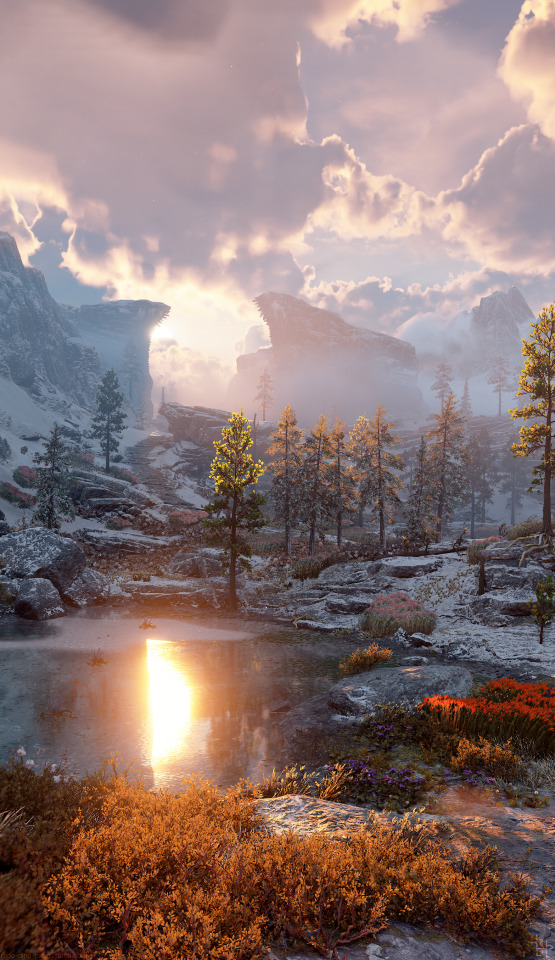
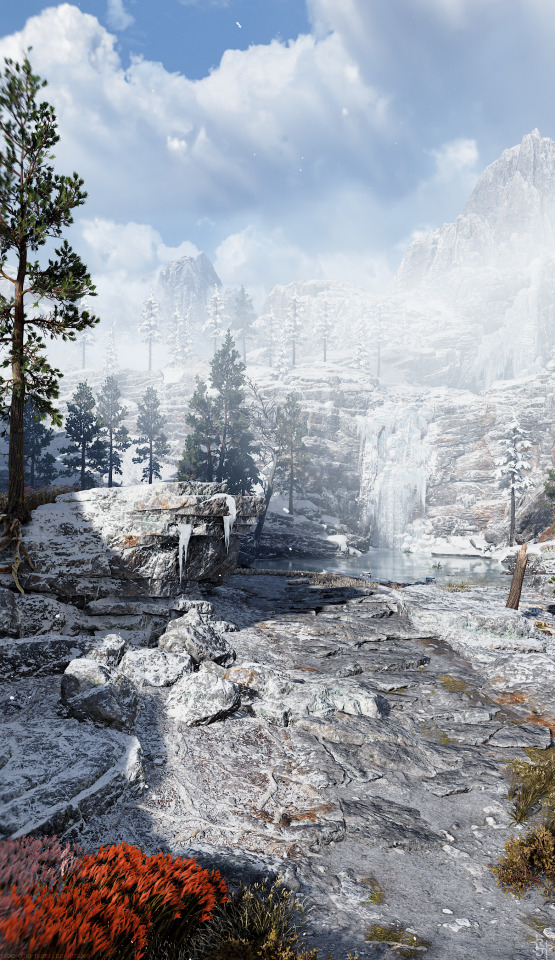

horizon forbidden west | sheerside mountains 16/?
#horizon forbidden west#hfw#hfw landscapes#hfw sheerside mountains#i don't think i've posted any of these before but it's getting a bit difficult to double check lmao#curse past-me for not keeping my folder organized >:[#i think i may have already done a horizontal version of the one with the sun reflecting...
49 notes
·
View notes
Text
Some crayola color pencil hyjinks

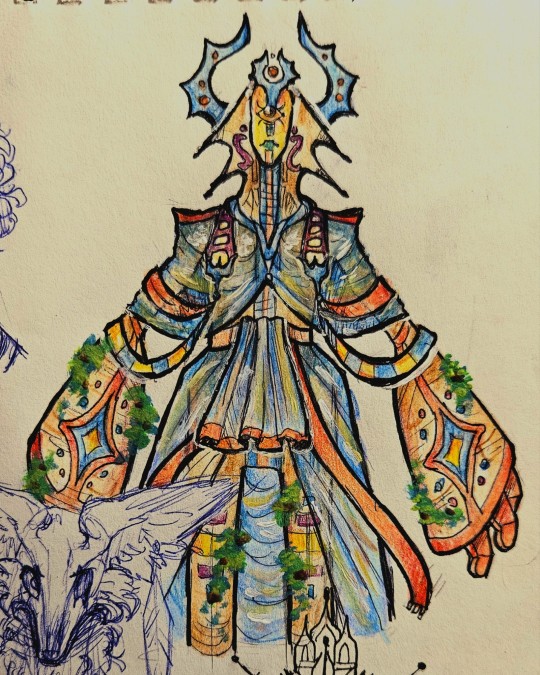
#art#artists on tumblr#my artwork#traditional art#funfact of the post: crabs can move their eye stalks from a horizontal position to vertical#crabs also freak me out because they're like ginormous bugs#I have various paralyzing fears of non-mammilian organisms#Like I love animals a lot but my brain is under the impression I will die a devastating death to an earth worm for some reason#my persona is a weird spider thing doo-dad the irony hasn't missed me
5 notes
·
View notes
Text
"Vertical organizers find it natural to use filing cabinets to store materials that they intend to use just an hour or a day or a week later. When they need that stuff again, they reach into the filing cabinet, pull out the folder and resume working on it. They don't understand how foreign this whole idea is to a horizontal organizer...
I am a horizontal organizer. I like all the things I am working on speed out on a surface in front of me, where they can beckon me to continue working on them. When I put something in a file, I never see it again. The problem isn't that i can't find it (although that has happened) but that I don't look. I am constitutionally incapable of opening a filing cabinet and fishing out a half-finished project to resume working on it. You might think that computers would take of this, but they don't... The horizontal organizer leaves everything on her computer desktop, which can end up as messy as a real one... she is only capable of dealing with what is in her in-box. If she makes a file and labels it "Urgent Stuff," it won't work. She'll never get around to opening the file.
... [Vertical organizers] tend to think that a desk spread thick with paper is a sign of a disorganized person. But this isn't so. It's like looking at a left-handed student all squashed up taking notes on one of those [right-handed] desks and thinking that he is uncoordinated. The problem is that he is at a situational disadvantage. And that is the problem for horizontal organizers, tool. The whole world is set up to help keep vertically organized people on top of things, through the use of filing cabinets. The only things horizontally organized people have are desks, the tops of filing cabinets, nearby chairs, and the floor. If some thought were put into a good document storage and retrieval system for horizontally organized people, we could be as organized and neat as anyone else."
-- John Perry. "A Please for the Horizontally Organized," from The Art of Procrastination.
2 notes
·
View notes
Note

If only i could put in one more character then it’d be perfect- I finally got the bitch ass bug so yay :) when I finally got money to buy timer balls (cus poor and was trying to save for the adm) it wants to go into the dusk ball- this asshole just LIVES to spite me
Figured out where to put in mystery gifts so I got all the stuff I need for other legendaries :) except celbie(?) cus- where tf do I get spiky eared pichu and what lvl is he because I cannot be bringing a lvl 40-/+ to a battle with a lvl 70+ Pokémon- also here’s everyone so far :) I’m trying to sort it by region just to make it near but 1 where is fucking jirachi from 2 where would melmetal go and 3 alola needs its own damn box because of the tapus also being in the game apparently- other than that I have some spots open because of specific Pokemon I haven’t caught yet like the slot under mewtwo being for mew and under reshiram and zekrom for kyruem- it’s a lot-

omg bug got :) not in the ideal ball tho smh but we got there : ]]
omg box organization .... we love that .....
#snap chats#i dont ever see people organize the box vertically- like as a kid id do it horizontal style#also jirachi would be hoenn ! melmetal should be uh. idk :)#i always organized my boxes numerically it ends up being organized by region anyway with that method#the only caveat is later evoltuion pokemon like crobat arent with their evolution groups but w/e we ball#either way. lot of pokemon. even if it just legendaries#never realize how mnay legendaries there are until you start collectin lol ...
4 notes
·
View notes
Text
https://youtu.be/NESBtODxNVA?si=q9r2eLYLAZrS-RSk
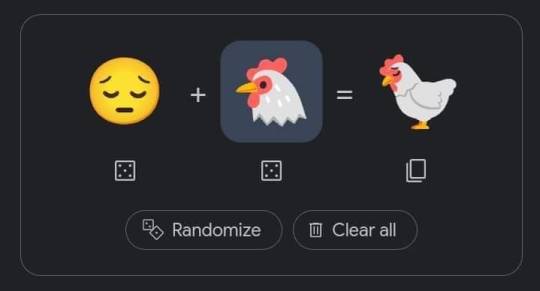
Mood
68K notes
·
View notes
Text
Briefly describe the main equipment of the bio-organic fertilizer production line
Bio-organic fertilizer plays a pivotal role in modern agriculture, and the equipment of the bio-organic fertilizer production line is a strong driving force for the vigorous development of this green industry. The bio-organic fertilizer production equipment covers the entire process of fermentation, crushing, granulation, drying, packing, etc. The core equipment includes:
1.Fermentation equipment
Use a Compost Turning Machine (such as Simple Compost Turning Machine)to accelerate the composting of organic waste (such as livestock and poultry manure, straw) through efficient aeration and temperature control technology.

2.Crushing equipment
Use a Crusher (such as Chain Crusher) to crush the fermented material into a uniform and fine powder, which improves the homogenization level of the raw materials and ensures the subsequent granulation effect. In addition, high-quality crushing equipment can also adapt to materials of different hardness and humidity to ensure the crushing effect.

3.Mixing equipment
Use a Mixer (such as Horizontal Mixer) to mix the crushed material with various nutrients, microbial agents, etc. in a scientific proportion to ensure that the biological organic fertilizer is balanced and rich in nutrition.

4.Granulation equipment
Granulation equipment gives the bio-organic fertilizer its final form. Whether it is round, cylindrical or other shaped particles, granulation equipment (such as Rotary Drum Granulator) can accurately produce them. The granules made are beautiful and strong, and are convenient for storage, transportation and application.

5.Drying and cooling equipment
The Drum Fertilizer Dryer is used with a Hot Air Stove to dry the granulated bio-organic fertilizer particles to reduce the moisture content. Then the particles are cooled with the Drum Fertilizer Cooler to facilitate the subsequent process.
6.Screening equipment
Screening equipment (such as Drum Screener Machine) is used to screen the bio-organic fertilizer to screen out particles that meet the product requirements, and unqualified particles are returned or granulated again.
7.Packing equipment
Finally, an automated packing machine is used to pack the finished fertilizer. Automated equipment helps to achieve accurate measurement and improve production capacity and product consistency.
Bio-organic fertilizer production equipment is not only a carrier of technological innovation, but also the cornerstone of sustainable agricultural development. Choosing suitable equipment and processes can significantly improve fertilizer quality and reduce production costs. If you need customized solutions or equipment, please contact Huaqiang Heavy Industry.
#bio-organic fertilizer production line#Simple Compost Turning Machine#Chain Crusher#Horizontal Mixer#Rotary Drum Granulator
0 notes
Text
In the fields of agricultural production, sewage treatment and municipal waste treatment, organic fertilizer horizontal mixer, as an efficient and multi-functional production equipment, is gradually becoming the first choice in the industry. Its unique design, superior performance and a wide range of application scenarios make the equipment show significant advantages in improving production efficiency, improving product quality and reducing production costs. First, compact structure, easy to install Organic fertilizer horizontal mixer adopts horizontal structure design, covers a small area, convenient installation, especially suitable for various scales of organic fertilizer production enterprises. This compact structure not only saves valuable production space, but also facilitates the transportation and installation of equipment, reducing the initial investment costs of enterprises. Second, the mixing effect is good, mixed evenly The organic fertilizer horizontal mixer adopts a two-axis mixing system, through the action of two rotors in opposite directions, the material forms a full range of continuous circulation in the groove. This design effectively avoids the problem of material caking in traditional mixing equipment and ensures the uniform mixing of materials. At the same time, the efficient design and staggered layout of the mixing blade make the material in the process of rapid churning and spraying, even if there are differences in specific gravity and particle size, it can achieve a high mixing uniformity, and the residual amount is less, which improves the product quality of organic fertilizer.

Third, low energy consumption, energy saving and environmental protection The organic fertilizer horizontal mixer of organic fertilizer is driven by high efficiency motor, the mixing speed is fast, and the raw materials can be mixed evenly in a short time, thus improving the work efficiency. At the same time, the equipment adopts a completely closed structure design, reducing dust pollution and noise pollution, in line with modern environmental protection requirements. In addition, the equipment is made of wear-resistant materials, which extends the service life, reduces the frequency and energy consumption of replacement parts, and further reflects its energy-saving and environmental protection characteristics.
0 notes
Text
In modern agricultural production, the disposal of chicken manure has always been a difficult problem. However, with the continuous development of organic fertilizer granulation technology, this problem has been effectively solved. By converting chicken manure into organic fertilizer, it not only solves the problem of environmental pollution, but also brings additional economic benefits to chicken farms.

First of all, the establishment of Organic Fertilizer Production Line is the key to achieve this transformation. Production lines usually include raw material preparation, fermentation, crushing, mixing, granulation, drying, screening and packaging. At the raw material preparation stage, fresh chicken manure is dehydrated and fermented to reduce odors and improve the stability of organic matter. During the fermentation process, the Windrow Compost Turning Machine can be used to increase oxygen and accelerate the decomposition of organic matter.
Next comes the crushing process, where Cage Crusher plays an important role in crushing the fermented material to a size suitable for granulation. The pulverized material passes to the Horizontal Ribbon Mixer, where it is mixed with other nutrients such as NPK fertilizers produced on the NPK Fertilizer Production Line to prepare for granulation.
Granulation is a crucial step in the production of organic fertilizer, where the Flat-Die Pellet Machine forms the mixture into pellets that have good physical properties and are easy to apply and store. The produced particles are then dried in a Rotary Dryer Machine to reduce the moisture content and improve the preservation of the fertilizer.
The dried organic fertilizer particles are screened by Rotary Screening Machine to ensure that the particle size is consistent and in line with market standards. Finally, Uniform Feeder will uniformly feed the sieved particles into the packaging system, complete the packaging, ready for sale.
Through this series of processing processes, the manure from the chicken farm is no longer waste, but becomes an efficient organic fertilizer. This fertilizer can not only improve soil structure and increase crop yields, but also reduce the use of chemical fertilizers, thus reducing the environmental impact.
In addition, the organic fertilizer granulation recycling mode also helps to improve the economic benefits of chicken farms. By selling organic fertilizer, chicken farms can obtain an additional source of income. At the same time, because the use of organic fertilizers reduces the dependence on chemical fertilizers, it also reduces the cost of agricultural production.
In short, the application of organic fertilizer granulation technology not only solves the problem of manure treatment in chicken farms, but also realizes the recycling of resources, which brings double benefits of environmental protection and economic benefits to chicken farms. With the continuous progress of technology and the increasingly mature market, organic fertilizer granulation will certainly play an increasingly important role in modern agricultural production.
#Organic Fertilizer Production Line#Windrow Compost Turning Machine#Cage Crusher#Horizontal Ribbon Mixer#NPK Fertilizer Production Line#Flat-Die Pellet Machine#Rotary Screening Machine#Uniform Feeder
0 notes
Text
In the vast pastures of Australia, a new trend is emerging, that is, the use of environmentally friendly fertilizer granulators to improve the quality and yield of forage. The application of this technology not only helps to protect the environment, but also promotes the sustainable development of animal husbandry.
The Organic Fertilizer Production Line has played an important role in this process. Through this production line, organic waste in the pasture, such as animal waste and crop residues, can be converted into high-quality organic fertilizer. These fertilizers are rich in key nutrients such as nitrogen, phosphorus and potassium, which are essential for grass growth.

The Fertilizer Granules Compaction Machine in the fertilizer granulator series is the key equipment to achieve this transformation. It extrudes organic fertilizers into pellets by physical methods, which is not only easy to store and transport, but also improves the application efficiency and uniformity of fertilizers.

The Horizontal Ribbon Mixer also plays a crucial role in the production of organic fertilizers. It ensures a uniform mix of various raw materials, resulting in the production of organic fertilizers of consistent quality. The design of this mixer helps to evenly mix the raw materials, avoiding the problem of local too wet or too dry, thus ensuring the stability and consistency of the organic fertilizer.

The Rotary Screening Machine is responsible for grading the resulting fertilizer particles to ensure that the fertilizer particles are uniform in size and suitable for grass absorption. The use of screening machine improves the application quality of fertilizer and avoids the problem that the fertilizer effect is affected by too large or too small particles.
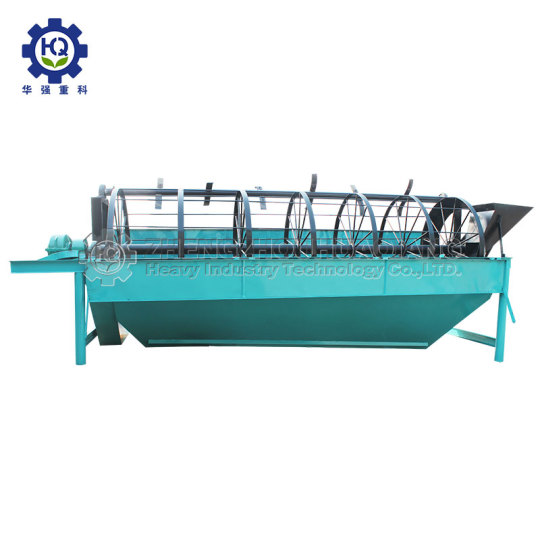
Finally, Uniform Feeder as the front end of the production line, can evenly feed raw materials into the pelletizer, to ensure the continuity and uniformity of the production process. This not only improves production efficiency, but also helps maintain the quality of the final product.

Through the application of these advanced organic fertilizer granulation technologies and equipment, Australian pastures can promote pasture growth in a more environmentally friendly and efficient way. This will not only help to improve the economic efficiency of livestock farming, but also reduce the impact on the environment and achieve a true green revolution.
#Organic Fertilizer Production Line#Fertilizer Granules Compaction Machine#Horizontal Ribbon Mixer#Rotary Screening Machine#Uniform Feeder
0 notes
Text
In the tropical orchards of Southeast Asia, durian has won the reputation of "King of fruits" for its unique aroma and rich nutrition. However, the high quality of durian is not only dependent on the unique natural conditions, but also on modern agricultural technology, especially the application of organic fertilizer granulation technology.
Organic Fertilizer Production Line plays a vital role in durian cultivation. The organic fertilizer produced through this production line can provide the durian tree with comprehensive nutrition, including essential mineral elements such as nitrogen, phosphorus and potassium, as well as organic matter, thereby promoting the healthy growth of the durian tree and the formation of high-quality fruit.
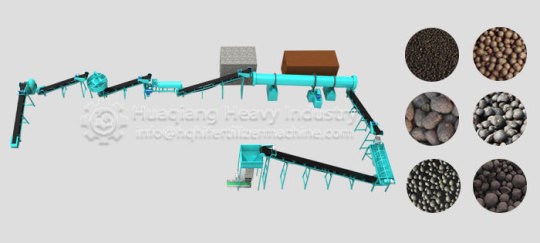
In organic Fertilizer granulation technology, Fertilizer Granules Compaction Machine plays an irreplaceable role. It extrudes organic fertilizers into pellets by physical methods, which not only facilitates the storage and transportation of fertilizers, but also improves the utilization rate and application effect of fertilizers. The organic fertilizer after extruded granulation has uniform particles and compact structure, which is more conducive to the absorption of the roots of durian tree.

In addition, the Horizontal Ribbon Mixer plays a key role in the production of organic fertilizers. It ensures the quality and effect of organic fertilizer by evenly mixing various raw materials. The design of this mixer helps to evenly mix the raw materials, avoiding the problem of local too wet or too dry, thus ensuring the stability and consistency of the organic fertilizer.

Finally, organic fertilizers usually need to be screened by a Rotary Screening Machine before application to ensure that the fertilizer particles are uniform in size and suitable for the growth needs of the durian tree. The use of screening machine improves the application quality of fertilizer and avoids the problem that the fertilizer effect is affected by too large or too small particles.

Through the application of these advanced organic fertilizer granulation technologies and equipment, the yield and quality of durian have been significantly improved. Organic fertilizers not only improve the fertility of the soil, but also help improve the taste and nutritional value of the durian fruit, making it a shining pearl in Southeast Asia's green revolution. With the continuous development and improvement of organic fertilizer granulation technology, we have reason to believe that durian, the "king of fruits", will exude more charming charm in the future.
#Organic Fertilizer Production Line#Fertilizer Granules Compaction Machine#Horizontal Ribbon Mixer#Rotary Screening Machine
0 notes
Text
In the Australian livestock industry, the use of fertilizer granulators is of great importance for optimizing cattle and sheep feed. By converting organic and inorganic substances into high-quality granular fertilizers, these machines not only improve the nutrient value of fertilizers, but also increase their suitability in feed.
NPK Fertilizer Production Line
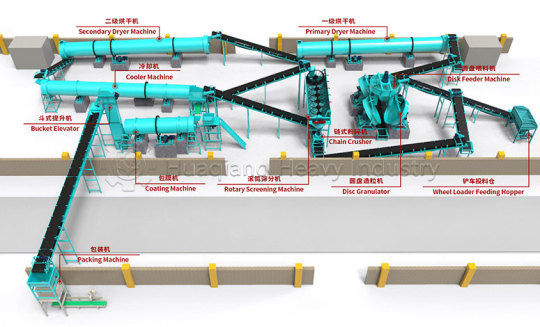
Australia’s fertilizer production line combines key elements such as nitrogen, phosphorus and potassium with precise ratios to produce composite fertilizers that meet the growth needs of cattle and sheep. The efficiency of this production line lies in its ability to adjust the nutrient ratio in the fertilizer according to the different nutrient requirements of the cattle and sheep at different growth stages, thus optimizing the feed formula.
Organic Fertilizer Production Line
Organic fertilizer production line is produced by processing agricultural waste and animal waste. These organic fertilizers can not only provide nutrients, but also improve the soil structure and improve the growth quality of feed crops. In Australia, the proliferation of such production lines is helping to drive sustainability in the livestock sector.

Fertilizer Granules Compaction Machine
Fertilizer Granules, such as Fertilizer Granules Compaction Machine and Flat-Die Pellet Machine, can make particles from mixed fertilizer raw materials. This granular fertilizer is easy to store and transport, and is more evenly distributed in the feed, helping cattle and sheep to better absorb nutrients.
Horizontal Ribbon Mixer
The Horizontal Ribbon Mixer plays an important role in fertilizer production. It is able to ensure that various raw materials are fully mixed during the production process, thus producing a uniform quality fertilizer. This is essential to ensure nutritional consistency from batch to batch.
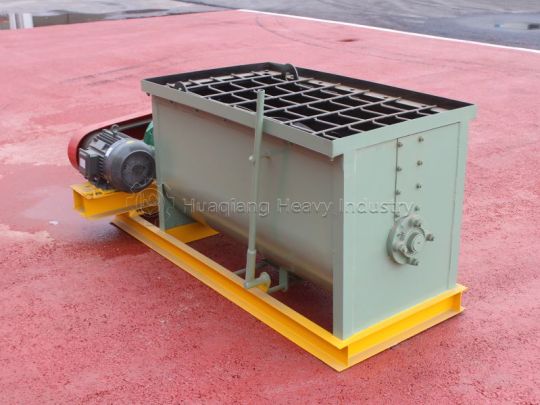
Through these advanced fertilizer lines and granulation technologies, Australia’s livestock industry is able to produce better feed to meet the growing needs of cattle and sheep while reducing their environmental impact. The application of these technologies not only improves the production efficiency of animal husbandry, but also provides valuable experience for the sustainable development of global animal husbandry.
#NPK Fertilizer Production Line#Organic Fertilizer Production Line#Fertilizer Granules Compaction Machine#Horizontal Ribbon Mixer
0 notes
Text

One year ago today, Aaron Bushnell set himself on fire at the gate of the Israeli embassy in Washington, DC as an act of protest against the ongoing genocide of Palestinians in Gaza.
The scale of the tragedy in Gaza exceeds anything we can understand from the United States. Aaron was determined not to passively accept it.
Today, in Aaron's memory, let us pledge ourselves once more to solidarity with Palestinians—to fight against genocide, ethnic cleansing, and all forms of colonialism.
In this memorial, we share Aaron’s summary of his anarchist politics, with testimony from his friends.
https://crimethinc.com/AaronMemories
In Aaron's own words:
"I am an anarchist, which means I believe in the abolition of all hierarchical power structures, especially capitalism and the state… I believe that any hierarchical power structure is bound to reproduce class dynamics and oppression. Thus, I want to engage in egalitarian forms of organizing that produce horizontal power structures based on mutual aid and solidarity."
In the words of one of Aaron's friends,
"Aaron has permanently changed the fabric of your being. You know this because for the rest of your life, you will wrestle with the thought of what you will sacrifice for the liberation of others."
5K notes
·
View notes
Text
Analysis of common faults of horizontal mixer
Horizontal mixers are a common mixing and agitating equipment that is widely used in a variety of industrial and laboratory environments. However, this equipment is also prone to various failures.
1, the mixing effect is not good. The poor mixing effect may be due to the loosening or damage of the blade of the agitator, resulting in the eccentric force in the process of processing and mixing of the organic fertilizer production line, so that the material can not be fully mixed. In addition, if the material contains a large number of large particles or solid substances, it may also lead to poor mixing effect.
2, organic fertilizer equipment noise is too large. The noise generated by the horizontal mixer during operation may come from the bearing wear, the collision between the impeller blade and the container wall, or the motor vibration. In order to reduce noise, the bearing lubrication can be checked and replaced if necessary. At the same time, ensure that the distance between the agitator blade and the container wall is appropriate to reduce collision. For the noise generated by motor vibration, the installation of the motor can be checked and adjusted if necessary.
3. Motor overheating. Motor overheating may be caused by poor motor heat dissipation, long-term high load operation, or motor failure. It is necessary to check the heat dissipation of the motor and clean or replace the heat dissipation equipment if necessary. At the same time, avoid running at high load for a long time to prevent the motor from overheating. If the motor fails, it should be stopped immediately to check and repair or replace the motor.

0 notes
Text
Introduction of Fertilizer Mixer
Fertilizer Mixer is the equipment of organic fertilizer production line, which is used to mix various fertilizer raw materials into a uniform state. After years of development, Huaqiang Heavy Industry has designed 4 different types of fertilizer mixing equipment. Generally speaking, these mixers can be divided into two types: powdered fertilizer mixing equipment and granular fertilizer mixing equipment.
Horizontal Mixer, Vertical Disc Mixer, Double Axis Mixer are to meet the requirements of powdered fertilizer material manufacturing. As for granular fertilizer mixing equipment, we have BB Fertilizer Mixer, which is specially used for mixing granular fertilizer production line, which can effectively mix different granular fertilizers.
1.Horizontal Mixer
The main feature of the Horizontal Mixer is that the mixing container is arranged horizontally, which can effectively handle the mixing of large-volume, high-viscosity or solid-particle materials, and is particularly suitable for mixing operations that require long-term mixing or high uniformity requirements.

2.Vertical Disc Mixer
The vertical disc mixer can handle dry powder, wet materials, slurry, and high-viscosity materials, and is suitable for various materials and industries. And because it is a vertical layout, it is suitable for production environments with limited space, and is particularly suitable for mixing small and medium batches of materials.
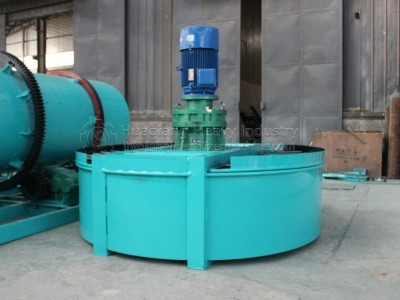
3.Double Axis Mixer
The cross-rotation of the two mixing axis of the Double Axis Mixer can achieve deep mixing of materials, ensuring uniform distribution of materials in the mixing tank, and is particularly suitable for occasions that require fine mixing.

4.BB Fertilizer Mixer
BB Fertilizer Mixer is a device that mixes different types of fertilizer raw materials by physical means. It is suitable for large-scale production and can handle a large amount of fertilizer raw materials.

In general, fertilizer mixers are mainly composed of three parts: the feed port, the mixing body and the discharge port. Each part has its own advantages, and each fertilizer mixer has different models and configurations. Therefore, you can choose the most suitable mixer according to your production needs. If you have any questions about mixing equipment, please contact us.
#organic fertilizer production line#Horizontal Mixer#Vertical Disc Mixer#Double Axis Mixer#BB Fertilizer Mixer
0 notes